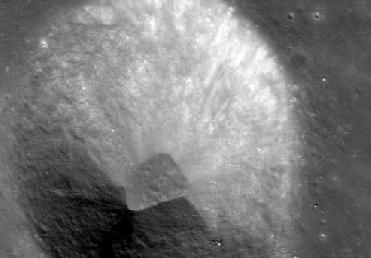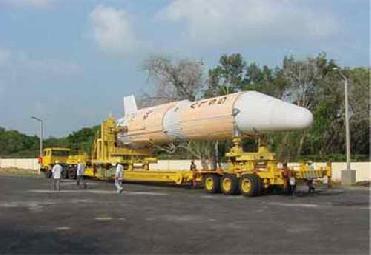
Far side of the Moon viewed at NADIR by Terrain Mapping Camera (TMC) of Chandrayaan-1 on Nov 24. ISRO photo
BANGALORE (BNS): Indian scientists will announce the preliminary findings based on the data generated by instruments on board India's Chandrayaan-1 moon mission in January, Indian Space Research Organisation (ISRO) chairman G Madhavan Nair announced on Monday.
Delivering a lecture on India's achievements in Space Technology at the Institution of Engineers (Mysore) recently, Nair said that Chandrayaan-1 was sending very good data to the ground stations.
"Soon, we will have the preliminary analysis of the data. By the end of January, we will have session by which the scientists will come together and announce the first findings," the ISRO chairman said.
Giving some insight, the chief said that there was already some lead about the presence of iron and calcium and others. "Yes, there are indications. But to say it conclusively, a lot of analysis need to be done," he said, adding that Chandrayaan-1 instruments have so far sent 35,000 images.
According to initial reports, the Moon Mineralogy Mapper (M3) instrument of the National Aeronautics and Space Administration (NASA) has returned images of the Orientale Basin on the western limb of the moon.
Carle Pieters, a senior scientist of US-based Brown University and principal investigator for the M3 experiment after examining the images has indicated abundance of iron-bearing minerals such as pyroxene. He has been quoted as saying that the image is from a single wavelength of light that contains thermal emission, providing a new level of detail on the form and structure of the region's surface.
According to ISRO, the images were captured by the M3 during the commissioning phase of Chandrayaan-1, launched on October 22, as the spacecraft orbited the moon at an altitude of 100 km.
"The M3 provides us with compositional information across the moon that we have never had access to before," Pieters said, adding that the ability to now identify and map the composition of the surface in geologic context provided a new level of detail needed to explore and understand the moon.
M3 is one of the 10 instruments onboard the unmanned Chandrayaan-1, conducting experiments while the spacecraft orbits over the moon in the next two years. ISRO indigenously built five instruments, while the remaining six experiments are global,
including three from the European Space Agency, two from NASA and one
from Bulgaria.
Meanwhile, Nair said that the successful launch of the Chandrayaan-1 mission has proved that India's homegrown technology is world-class.
"Investment in space technology has paid rich dividends to the country and ISRO has succeeded in taking its benefits from the confines of the laboratory, to the society at large," the space agency chief said.
Nair said that it was not possible for India to adopt technologies evolved by developed nations because 70 per cent of the people live in rural areas and it calls for addressing technological issues from the local angle.
"The Chandrayaan-1 mission was accomplished in four years from the time of project conception. This is remarkable for a maiden mission," Nair said.
 Previous Article
Previous Article Next Article
Next Article













The Indian Air Force, in its flight trials evaluation report submitted before the Defence Ministry l..
view articleAn insight into the Medium Multi-Role Combat Aircraft competition...
view articleSky enthusiasts can now spot the International Space Station (ISS) commanded by Indian-American astr..
view article